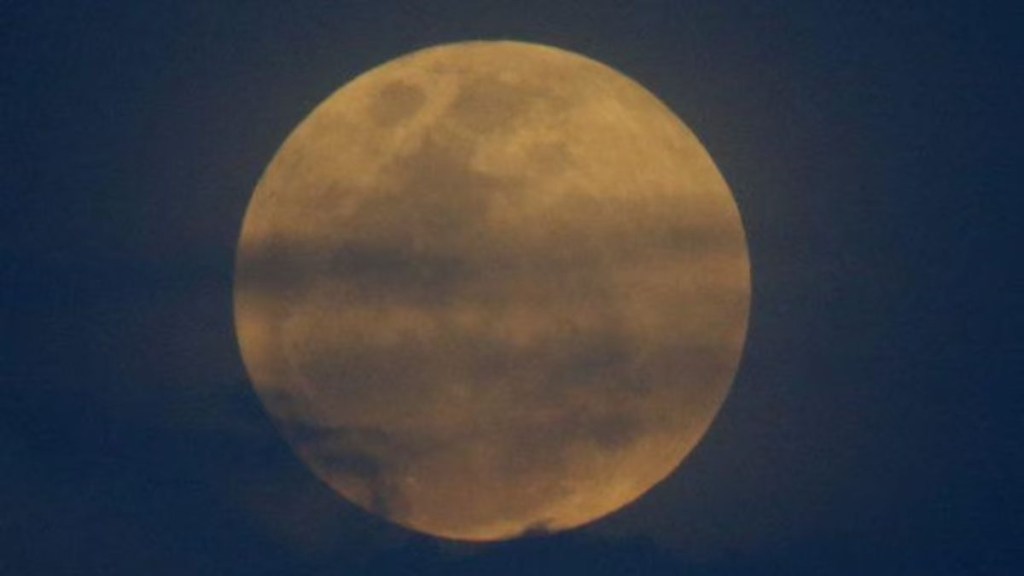Earth’s sole satellite, measuring just a quarter of its size, traverses the space around our home planet in a state of cold and lifeless isolation. Its orbit expands by an inch and a half each year.
The Moon has been Earth’s companion for approximately 4.6 billion years, since the birth of the Solar System. In ancient times, humans were fascinated by the Moon’s ever-changing position, shape, and its periodic disappearance from the sky during its 29-day cycle. Early civilizations, particularly in the Stone Age, documented the various phases of the Moon, using its observations as a means to mark the passage of days and anticipate the changing seasons. The reliable tracking of time was crucial for essential activities like agriculture and hunting, laying the foundation for human civilization.
Notably, ancient societies, including those responsible for structures like Stonehenge, incorporated lunar cycles into their calendar systems. The positioning of stones at sites like Stonehenge suggests a connection to lunar phenomena. These early calendars not only served as tools for tracking time but also influenced the determination of when the year should commence and how to subdivide it into smaller units. While the contemporary Gregorian calendar is based on the solar year, it’s essential to recognize that the earliest calendar systems were rooted in the lunar cycle.
History of Moon Exploration
The initial era of lunar exploration unfolded amid the geopolitical competition of the Cold War between the United States and the Soviet Union. In 1959, the Soviets achieved a notable milestone with Luna 1, marking the first spacecraft to break free from Earth’s gravity and approach the moon within approximately 4,000 miles. Subsequent Soviet missions, such as Luna 2, made strides by establishing contact with the moon’s surface, with Luna 2 crash-landing in the Mare Imbrium basin, yielding valuable insights. Concurrently, the United States entered the lunar exploration arena with NASA’s Ranger spacecraft, executing nine missions between 1961 and 1965. These missions provided close-up views and crucial data, aiding scientists in understanding the moon’s rough terrain and identifying potential landing sites for future human missions.
How is time calculated on the moon?
On the Moon, time is a bit different than what we experience on Earth. Unlike our 24-hour day, a day on the Moon, called a lunar day, lasts about 29.5 Earth days. This is because it takes the Moon about 29.5 days to complete one full rotation on its axis. So, if you were standing on the Moon, you would see the Sun rise and set over a period of nearly 30 Earth days.
To measure shorter intervals, like hours and minutes, scientists and astronauts use a system similar to ours. They’ve divided the lunar day into 24 “hours,” and each “hour” is further divided into 60 “minutes.” However, these lunar hours and minutes are much longer than our Earth hours and minutes.
Interestingly, due to the lack of a significant atmosphere on the Moon, there’s no natural way to define days and nights based on sunlight. Instead, temperatures can vary wildly between the extremely hot lunar day and the bitterly cold lunar night. This unique way of experiencing time adds an extra layer of challenge and fascination to any lunar activities or missions.
What time is it on the Moon and why should we care?
“For the many nations, international alliances, and companies investing in future opportunities on and around the Moon, the answer (or lack thereof) may have serious implications,” US based Ben Ogden, Professor of Strategic Space Studies, says .
According to Prof Ogden, “On Earth, aside from a few anomalies, the global community uses 24 geographical time zones aligned with Earth’s rotation as well as a Coordinated Universal Time (CUT) to synchronize timekeeping (most effectively by means of GPS satellite signals). This precise timing harmony enables our technologically modern world to function at its peak.”
“Assured timing and tempo will mean everything to the long list of interested stakeholders looking to revolutionize human presence and activity on the lunar surface and its associated orbits. So, the spacefaring community needs a common timekeeping governance to avoid operational degradation, disruption, miscalculation, embarrassment, and even catastrophe before the next lunar footprints are set.
Otherwise, travelers to the so-called “Eighth Continent” might experience something a little more serious than a bad case of jetlag,” he states.
Lunar Exploration
Humans have been fascinated by the moon since ancient times, gazing up at its luminous presence in the night sky. The earliest recorded observations of the moon date back to ancient civilizations, where it often held cultural and religious significance. However, it wasn’t until the invention of the telescope in the 17th century that detailed lunar exploration began.
In 1609, Galileo Galilei turned his telescope to the moon, revealing its cratered surface and mountains. This marked a crucial milestone in our understanding of Earth’s celestial companion. Over the centuries, various lunar missions and scientific advancements further fueled our interest in lunar exploration.
The space race of the 20th century played a pivotal role in intensifying our lunar curiosity. The Apollo program by NASA, initiated in 1961, aimed to land humans on the moon. On July 20, 1969, the Apollo 11 mission achieved this historic feat, with astronauts Neil Armstrong and Buzz Aldrin becoming the first humans to set foot on the lunar surface.
In the 21st century, renewed interest in lunar exploration has emerged, driven by technological advancements, international collaborations, and the pursuit of scientific knowledge. The moon serves as a valuable platform for studying planetary processes, conducting space experiments, and potentially establishing a future human presence beyond Earth. This ongoing curiosity about the moon reflects humanity’s enduring quest for understanding and exploring the mysteries of the cosmos.

